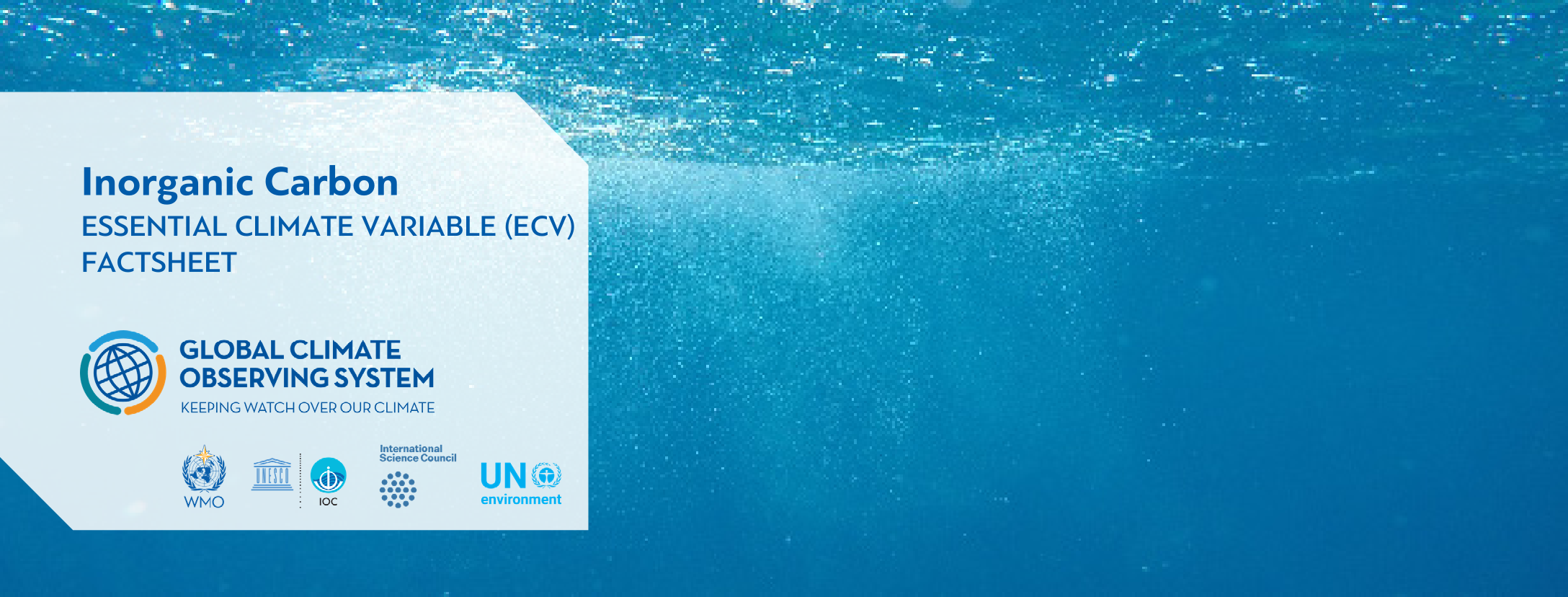
Inorganic Carbon
 |
The ocean is a major component of the global carbon cycle, absorbing enormous quantities of carbon in natural cycles driven by the ocean circulation, biogeochemistry and biology. Since seawater has very high capacity for absorbing carbon, the ocean has an inhibitory effect on the atmospheric accumulation of carbon dioxide and related greenhouse effect. The net ocean carbon uptake depends significantly on chemical and biological activity, and therefore it varies due to changing oceanic conditions and ecosystem composition. The chemical pathways of the inorganic carbon in the ocean mean that this uptake causes a decline in ocean pH, also known as ocean acidification. | |
| Domain: | Ocean | |
| Subdomain: | Biogeochemical | |
| Scientific Area: | Carbon Cycle and other GHGs | |
| ECV Steward: | ||
| Products: | Total Alkalinity; Dissolved Inorganic Carbon; pCO2 | |
Anthropogenic CO2 in the ocean
|
Figure left: Column inventory of anthropogenic CO2 in mid-1990s. Figure right: Long-term linear trend of pCO2 – pCO2air over the 1982 through 2011 period. Reference: Sabine, C. L., Feely, R. A., Gruber, N., Key, R. M., Lee, K., Bullister, J. L., Wanninkhof, R., Wong, C. S., Wallace, D.W.R., Tilbrook, B., Millero, F. J., Peng, T.-H., Kozyr, A., Ono, H., and Rios, A. F. (2004): The oceanic sink for anthropogenic CO2, Science, 305, 367-371. Reference: Landschützer, P., Gruber, N., Bakker, D.C.E., (2016): Decadal variations and trends of the global ocean carbon sink, Global Biogeochemical Cycles, 30, 1396-1417, doi:10.1002/2015GB005359. |
ECV Products and Requirements
These products and requirements reflect the Implementation Plan 2022 (GCOS-244).
The requirements are found in the complete 2022 ECVs Requirements document as well: ECV Inorganic Carbon.
| Products | Total Alkalinity | Dissolved Inorganic Carbon (DIC) | pCO₂ | |||||||
| Coastal | Coastal | Coastal | ||||||||
| (*) | Unit | Values | Values | Unit | Values | |||||
| Horizontal Resolution | G | km | 1000 | 100 | 1000 | 100 | km | 100 | ||
| B | ||||||||||
| T | 2000 | 1000 | 2000 | 1000 | 1000 | <1000 | ||||
| Vertical Resolution | G | |||||||||
| B | ||||||||||
| T | ||||||||||
| Temporal Resolution | G | month | 3 | 3 | 3 | |||||
| B | ||||||||||
| T | decadal | decadal | decadal | |||||||
| Timeliness | G | month | 6 | 6 | month | 6 | ||||
| B | ||||||||||
| T | 12 | 12 | 12 | |||||||
| Required Measurement Uncertainty (2-sigma) | G | μmol kg⁻¹ | 2 | 2 | μatm | 2 | ||||
| B | ||||||||||
| T | 2 | 2 | 2 | |||||||
| Stability | G | |||||||||
| B | ||||||||||
| T | ||||||||||
(*) Goal (G): an ideal requirement above which further improvements are not necessary. Breakthrough (B): an intermediate level between threshold and goal which, if achieved, would result in a significant improvement for the targeted application. The breakthrough value may also indicate the level at which specified uses within climate monitoring become possible. It may be appropriate to have different breakthrough values for different uses. Threshold (T): the minimum requirement to be met to ensure that data are useful
Data Sources
This list provides sources for openly accessible data sets with worldwide coverage for which metadata is available. It is curated by the respective GCOS ECV Steward(s). The list does not claim to be complete. Anyone with a suitable dataset who wishes it to be added to this list should contact the GCOS Secretariat.
- Global Ocean Data Analysis Project (GLODAPv2)
- CLIVAR and Carbon Hydrographic Data Office (CCHDO)
- Surface Ocean CO2 Atlas (SOCAT)
- National Centers for Environmental Information Ocean Carbon Data System (NCEI OCADS)
- Lamont-Doherty Earth Observatory (LDEO) Climatology


